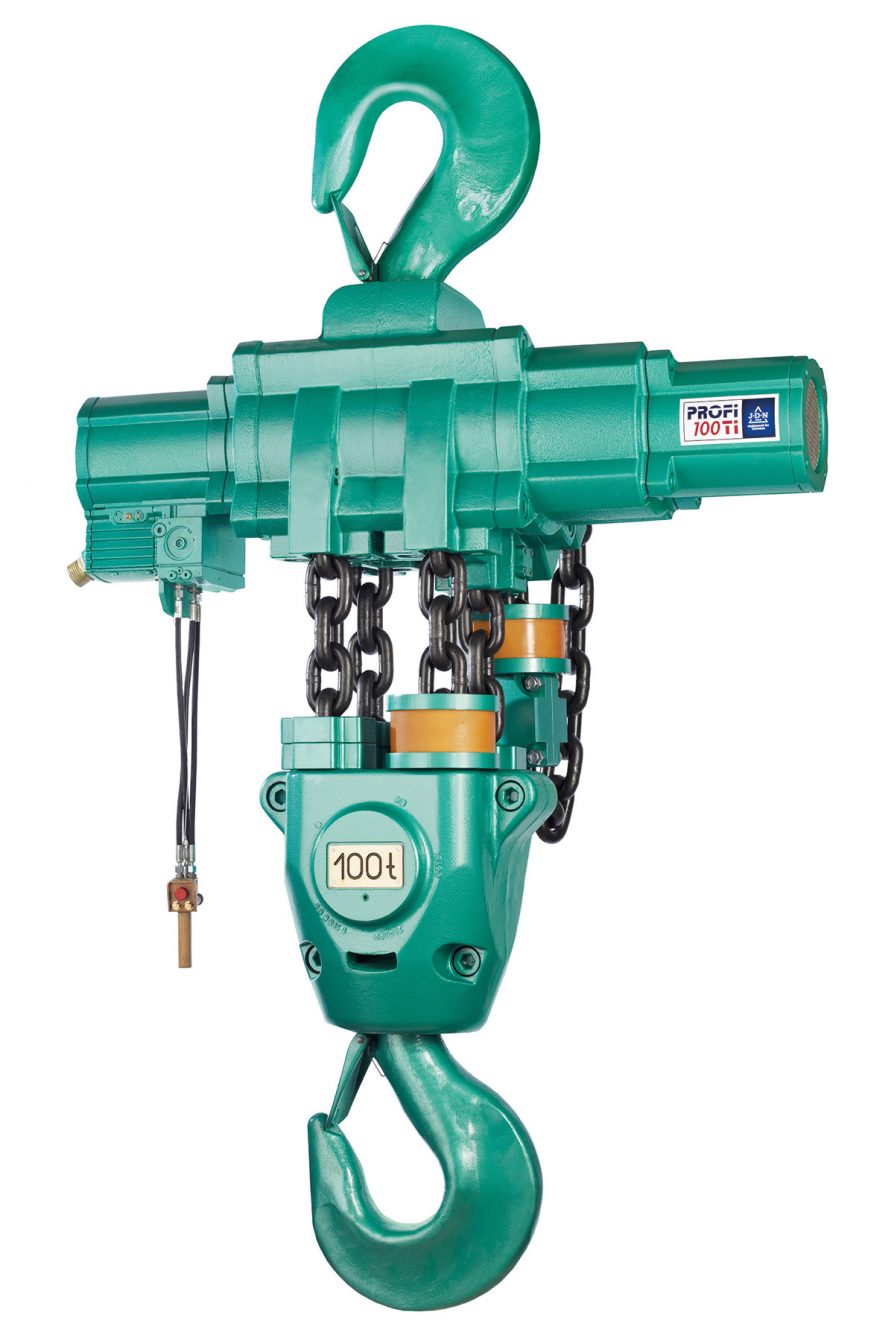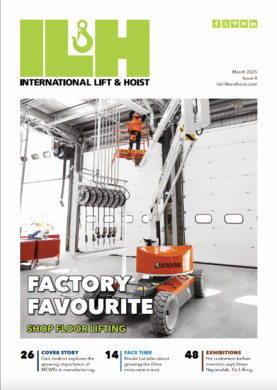)
J D Neuhaus Introduces New Heavy-Duty Profi Hoists
J D Neuhaus has launched its new Profi 75 TI and Profi 100 TI hoists, offering SWL capacities of 75 and 100 tonnes respectively. Existing products in the Profi range cover lift capacities from 250kg up to a full 60 tonnes, ideally suited to engineering environments.
The latest introductions, which incorporate savings in energy requirements as well as reductions in both weight and overall size dimensions, cover the demanding requirements of heavy engineering working conditions. The key component of these hoists is a new air motor unit, based on the J D Neuhaus motor-brake concept and incorporating a patented integrated brake system, with a stepped brake piston and a reliable self-lubricating rotor. In the standard configuration of a 6 bar air pressure supply, the motor provides a 9kW power output, adequate for the operation of either hoist while still providing significant energy reductions.
At full nominal lift capacities (75 or 100 tonnes), the compressed air consumed is 7.6m3/min which represents in excess of 30% saving over the hoists being replaced. On lowering of full loads, the air consumed is 6m3/min, which represents a 50% saving over the power/energy consumption of the hoists being replaced. The new hoists are designed with machinery group classification according to ISO 4301/FEM 9.5 II is M3/1Bm, which is good for 400 hours full load operation.
Although the overall air consumption has been reduced significantly, the lift and lower speeds with/without loads have been increased compared with the previous models of hoists, which helps to reduce handling and to increase production outputs over a full working day. The lifting speeds at full load have increased from 0.45 to 0.53m/min (Profi 75 TI) and 0.35 to 0.4m/min (Profi 100 TI). Lifting speeds without a load increase from 0.85 to 1.33m/min (Profi 75 TI) and from 0.7 to 1.0m/min (Profi 100 TI). The lowering speeds at full load have also benefited, increasing from 1 to 1.25m/min (Profi 75 TI) and from 0.8 to 0.95m/min (Profi 100 TI). Computer simulations like CFD were utilised throughout the development processes, with all simulation results validated in various praxis tests to achieve energy savings up to 50%, depending upon the operating conditions.
The combination of optimized material selection and modern design methods have significantly reduced the weight of the new hoists. This ensures that the relation between hoist unit weight and safe working loads is much better than with the superseded hoist designs. An overall weight saving of 750kg has been achieved for the Profi 75 TI, and 640kg for the Profi 100 TI. Some reductions in size have also been achieved, particularly that between the load bearing surfaces of the load and suspension hooks. Significant reductions in sound levels during operation have also been achieved, with the new hoists registering 77 dB(A) at full load lifting and 83 dB(A) on the lowering operation.
Lifting and lowering motor limiters incorporating a pneumatic pin valve design are also available as optional extras for both hoists.











